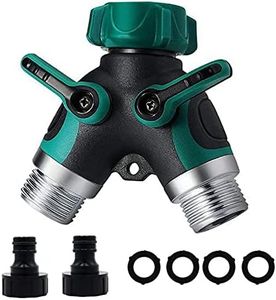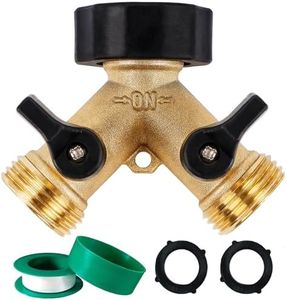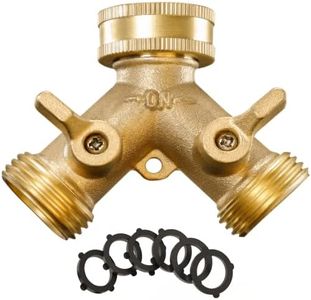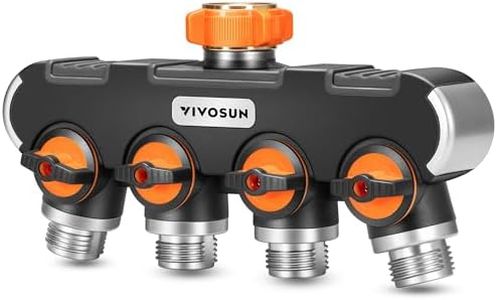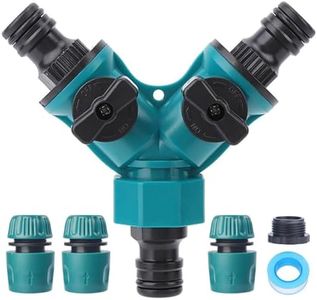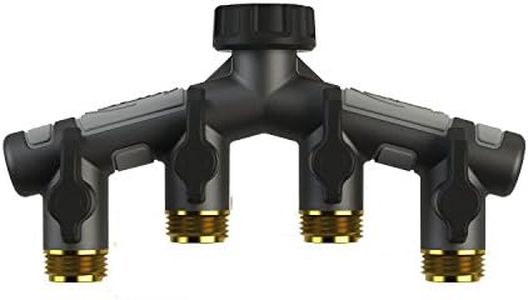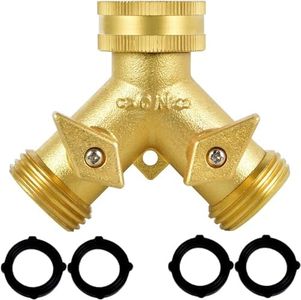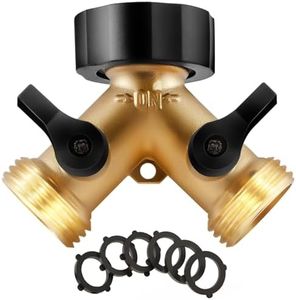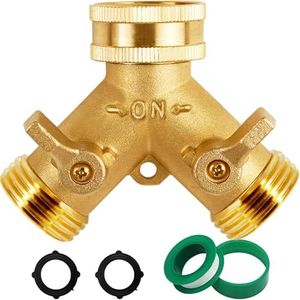We Use CookiesWe use cookies to enhance the security, performance,
functionality and for analytical and promotional activities. By continuing to browse this site you
are agreeing to our privacy policy
10 Best Garden Hose Splitters
From leading brands and best sellers available on the web.By clicking on a link to a third party's website, log data is shared with that third party.
Buying Guide for the Best Garden Hose Splitters
When choosing a garden hose splitter, it's important to focus on functionality, durability, and compatibility with your existing hoses and watering needs. A hose splitter allows you to attach multiple hoses to a single outdoor faucet, making watering easier and more convenient when you have several areas to water or want to use different tools at the same time. Understanding the key features will help you pick the best splitter for your garden setup.Number of OutletsThe number of outlets on a hose splitter refers to how many separate hoses or devices you can connect to it. Most splitters come with two (a 'Y' shape), but there are also three- and four-way versions. If you only need to run two hoses at the same time, a two-way will be sufficient. However, if you have several watering zones, sprinklers, or tools you want to use simultaneously, opt for a splitter with more outlets. Always match the number of outlets to your watering activities to avoid having unused or unnecessary connections.
MaterialHose splitters are commonly made of either plastic or metal (such as brass, zinc, or aluminum). Metal splitters are generally more durable, resistant to weather, and less likely to crack under pressure. Plastic models are lighter and can be easier to install but may wear out faster, especially in harsh sun or with frequent use. Consider a high-quality metal splitter for regular or heavy-duty use, and plastic may suit you if you only need occasional watering or want something lightweight.
Valve ControlValve control refers to the presence of individual levers or switches on each outlet of the splitter which allow you to turn the water on or off for each hose separately. Some valves offer easy grip and smooth movement while others may require more effort. Having individual valves is important for flexibility; for instance, you can water one area without turning off the main water supply or unscrewing hoses. For the greatest convenience, select a splitter with sturdy, easy-to-operate valves, especially if you’ll be switching them on and off frequently.
Connection CompatibilityConnection compatibility refers to the size and threading of the splitter's inlet (the part that attaches to your water spigot) and outlets (where hoses connect). Most garden hoses and outdoor faucets use standard thread sizes (like 3/4-inch), but it's always wise to check your hoses and faucet to confirm. Choosing the right size ensures a tight fit, preventing leaks. If you have non-standard hoses or specialty attachments, look for splitters with adjustable fittings or adapters.
Leak Prevention FeaturesLeak prevention features include built-in washers, rubber seals, or extra washers included in the package. These components help provide a watertight seal between the splitter and the faucet or hoses. If your splitter doesn’t have good seals, you may waste water and create puddles around your faucet. Look for splitters with solid seals and consider ones that provide spare washers for future maintenance, especially if you use the splitter often or in high-pressure systems.
Ease of InstallationEase of installation refers to how simple it is to attach and remove the splitter from your faucet and hoses. Features like large, ergonomic grips or tool-free installation make this process easier, especially if you'll need to move or adjust it frequently. If you prefer minimal hassle and don't want to use extra tools, select a splitter with clear markings and user-friendly connectors.
